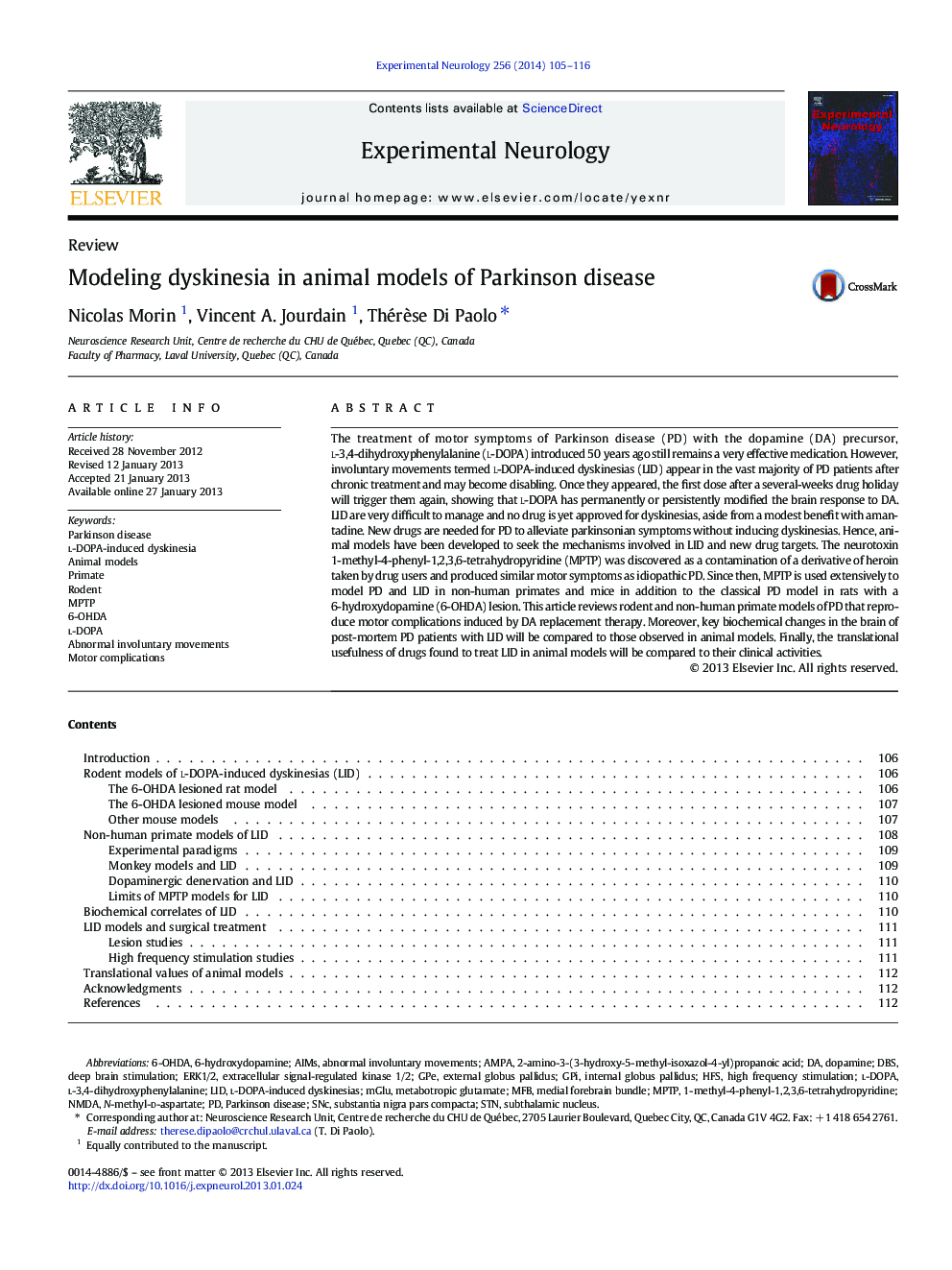| کد مقاله | کد نشریه | سال انتشار | مقاله انگلیسی | نسخه تمام متن |
|---|---|---|---|---|
| 3055524 | 1580176 | 2014 | 12 صفحه PDF | دانلود رایگان |
The treatment of motor symptoms of Parkinson disease (PD) with the dopamine (DA) precursor, l-3,4-dihydroxyphenylalanine (l-DOPA) introduced 50 years ago still remains a very effective medication. However, involuntary movements termed l-DOPA-induced dyskinesias (LID) appear in the vast majority of PD patients after chronic treatment and may become disabling. Once they appeared, the first dose after a several-weeks drug holiday will trigger them again, showing that l-DOPA has permanently or persistently modified the brain response to DA. LID are very difficult to manage and no drug is yet approved for dyskinesias, aside from a modest benefit with amantadine. New drugs are needed for PD to alleviate parkinsonian symptoms without inducing dyskinesias. Hence, animal models have been developed to seek the mechanisms involved in LID and new drug targets. The neurotoxin 1-methyl-4-phenyl-1,2,3,6-tetrahydropyridine (MPTP) was discovered as a contamination of a derivative of heroin taken by drug users and produced similar motor symptoms as idiopathic PD. Since then, MPTP is used extensively to model PD and LID in non-human primates and mice in addition to the classical PD model in rats with a 6-hydroxydopamine (6-OHDA) lesion. This article reviews rodent and non-human primate models of PD that reproduce motor complications induced by DA replacement therapy. Moreover, key biochemical changes in the brain of post-mortem PD patients with LID will be compared to those observed in animal models. Finally, the translational usefulness of drugs found to treat LID in animal models will be compared to their clinical activities.
Journal: Experimental Neurology - Volume 256, June 2014, Pages 105–116
